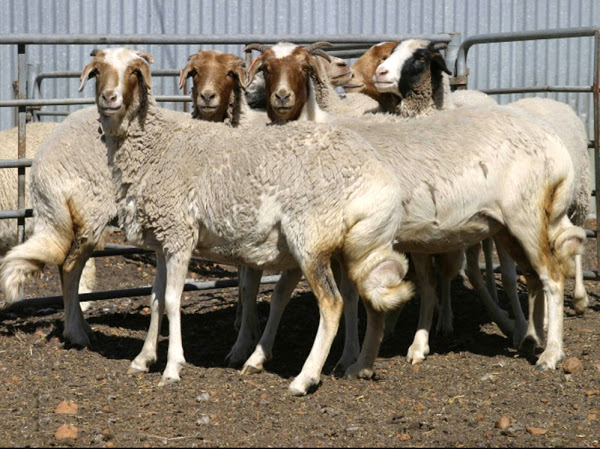
RARE BREEDS TRUST OF AUSTRALIA
powered by TidyHQSheep: Namaqua Afrikaner
Sheep: Namaqua Afrikaner
Country of Origin 
South Africa
Australian Status

International Status
Critical
Uses
 Meat and Pelts
Meat and Pelts
Breed Traits
The Namaqua is a tall, high standing sheep with long legs which enable it to cover vast distances in search of food and water.
It is a fat tailed meat sheep with a soft, shiny kemp free covering of wool and hair. White fluffy wool with a silky feel is the first covering on the skin with long, soft glossy hair in the wool. The body covering is shed during Summer. The Namaqua generally have black or red/brown heads. Adult rams can reach 75 kg with ewes around 56kg. The tail is fat and very distinctive with a corkscrew twist at the end. It can weigh between 8 and 12 kg and hangs down below the hocks. The tail alone stores 38% of the animal's body fat.
The sheep can tolerate intense sunny conditions as well as very high and low extremes of temperatures. The breed is remarkably resistant to most African sheep diseases as well as internal and external parasites.
The ewes can be bred at any time of the year and by mobilising their fat reserves they are able to wean heavy lambs under severe drought conditions. They are excellent mothers and will fiercely protect their lambs.
History
The Namaqua Afrikaner is one of the oldest sheep breeds in South Africa. The original Afrikaner sheep migrated south with the Khoikhoin people and entered South Africa between 200 and 400 AD. The Nama people kept the original Namaqua Afrikaner in the harsh dry areas of the North-West Cape and Southern Namibia.
The Namaqua Afrikaner is an endangered breed in South Africa. Cross breeding has almost led to extinction, but the Department of Agriculture stepped in and bought the last purebred flock from PJ Maas in 1966. In 1995 there were an estimated 2000 Namaqua left in South Africa. In 2014, there were two flocks of one hundred ewes each being maintained by the Northern Cape Department of Agriculture. The Department of Agriculture, Forestry and Fisheries, through Grootfontein, is working on a Conservation Project for the breed consisting of maintaining live herds, a cryopreservation bank for embryos and semen and a DNA Bank.
History in Australia
The Namaqua were brought into Australia in 2001 as embryos . They are also thought to have arrived on the First Fleet.
Ida Vale Stud, in Western Australia is keeping a flock of Ronderib and a small flock of Namaqua Afrikaner as a genetic back-up.
Australian Population
Ewes: 10 (2017)
No numbers 2022
Breed Organisation
Not known
Photo Credit
Photo courtesy of Ida Vale Stud
